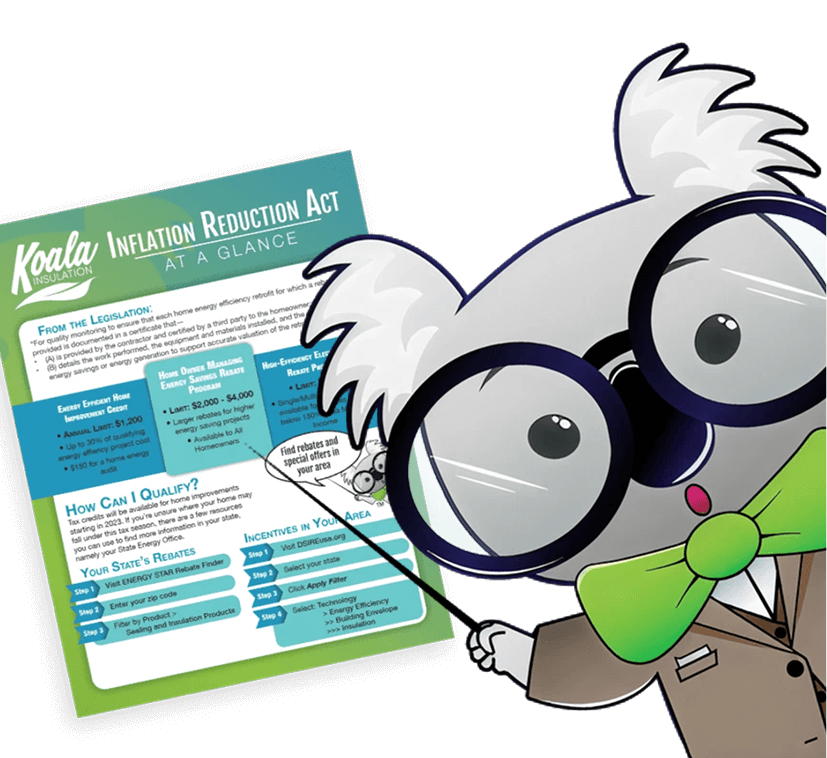Areas You Are Forgetting to Insulate

📍 Koala Insulation of St. Paul | ☎ (651) 272-2720
When most homeowners think about insulation, they usually picture the attic—and they’re not wrong. Attic insulation is essential to energy efficiency. But what many don’t realize is that there are several other parts of your home that need insulation too.
Failing to insulate these overlooked areas can cause drafts, higher energy bills, and uncomfortable temperature swings—especially during the frigid winters and humid summers we experience here in St. Paul.
At Koala Insulation of St. Paul, we help homeowners identify hidden energy leaks and create a fully insulated building envelope. Below are the most commonly forgotten places that need insulation—and why upgrading them can make a huge difference.
1. Garage Walls and Ceilings
If your garage is attached to your home, insulating it is a must—especially the walls and ceilings that connect to your living space. Without insulation, your garage becomes a major source of heat loss in winter and heat gain in summer.
Why it matters:
Cold air from the garage can seep into bedrooms, kitchens, or living rooms that share walls. This forces your HVAC system to work harder and increases your utility bills.
Pro tip:
If you have a bonus room or finished space above the garage, insulating the garage ceiling is even more critical.
2. Crawl Spaces
Crawl spaces are often neglected because they’re out of sight—but they can be a huge source of energy loss. Moisture and cold air can creep up from below, chilling your floors and lowering indoor air quality.
Signs of poor crawl space insulation:
- Cold floors in the winter
- Musty smells
- Higher-than-normal heating bills
Solution:
Install insulation along crawl space walls and floors. For best results, pair this with encapsulation and a vapor barrier to control moisture levels.
3. Basement Rim Joists
Rim joists are the edges where the floor framing meets the exterior walls of your basement. This area is one of the most common sources of air leakage—yet it’s rarely insulated in older homes.
The result?
- Cold drafts in lower-level rooms
- Moisture intrusion and potential mold growth
- Uneven temperatures throughout your home
Best insulation:
Closed-cell spray foam is ideal for rim joists. It seals out air and moisture in one step.
4. Interior Walls
Most people focus only on insulating exterior walls—but interior wall insulation can provide acoustic benefits and even thermal comfort between rooms.
When it’s useful:
- Between bedrooms for noise reduction
- Around bathrooms to reduce plumbing noise
- In home offices or media rooms for soundproofing
Added bonus:
Interior insulation helps regulate temperatures between rooms, especially in multi-level homes.
5. Floors Over Unheated Spaces
Any room located above an unheated garage, basement, or crawl space should have floor insulation. Without it, heat escapes downward in the winter—and your feet can feel it.
Watch for:
- Cold floors, especially in older homes
- Rooms that feel colder than others
- Drafts along baseboards
What to do:
Install batt or spray foam insulation between floor joists. This creates a thermal break between the room and the unheated space below.
6. Attic Access Points
You may have added insulation to your attic—but did you insulate the access door or hatch?
This small, often overlooked area can be a major source of heat loss. Since warm air rises, unsealed attic doors allow your heated air to escape right into the attic.
Fix it:
Use rigid foam board insulation on attic doors and install weatherstripping around the edges for a tight seal.
7. Ductwork in Unconditioned Spaces
If your HVAC ducts run through unconditioned areas like attics, basements, or garages, you’re likely losing valuable heated or cooled air before it even reaches your living space.
How much?
According to ENERGY STAR®, up to 30% of your HVAC’s air can be lost through uninsulated ducts.
The solution:
Insulate and seal ducts in any unconditioned space. This keeps your air comfortable and your system efficient.
8. Exterior Wall Outlets and Switches
Electrical outlets and switches on exterior walls may seem minor—but they can allow drafts and heat loss if not sealed properly.
Test it yourself:
On a cold day, hold your hand up to an outlet—if you feel a breeze, it’s time to add insulation.
Fixes include:
- Foam gaskets behind outlet covers
- Spray foam for larger gaps
- Caulking around outlet boxes
9. Recessed Lighting Fixtures in Ceilings
If your home has can lights or recessed lighting in the ceiling, they can create small but significant openings into the attic. Without proper insulation, heat can escape—and worse, moisture can enter.
Safe insulation tips:
- Use IC-rated (insulation contact) light fixtures
- Add a protective covering or baffle
- Surround with insulation while maintaining clearance
Expert installers like those at Koala Insulation of St. Paul know how to insulate around lighting safely and effectively.
10. Behind Bathtubs and Shower Stalls
Exterior-facing walls behind tubs and showers often go uninsulated—especially in older remodels. These gaps allow cold air to seep in and heat to leak out.
Consequences:
- Chilly bathrooms in winter
- Difficulty maintaining consistent temperature
- Risk of moisture damage behind walls
How to prevent it:
If you’re renovating or replacing fixtures, ensure those walls are insulated with the right R-value before resealing.
Maximize Your Home’s Comfort and Efficiency
Insulation is more than just an attic upgrade—it’s a whole-home strategy. By addressing these forgotten areas, you can significantly improve comfort, reduce energy bills, and increase your home’s value.
At Koala Insulation of St. Paul, we specialize in helping homeowners find and fix hidden insulation issues. From advanced assessments to expert installation, we handle every detail to ensure your home is protected from top to bottom.
Don’t Miss a Spot—Call Us Today
Ready to boost comfort and energy savings in your home?
Call Koala Insulation of St. Paul at (651) 272-2720 or visit our website for a free estimate today!
Let us help you uncover—and properly insulate—the area’s most homeowners forget.
Find Your Location


Get a quote



